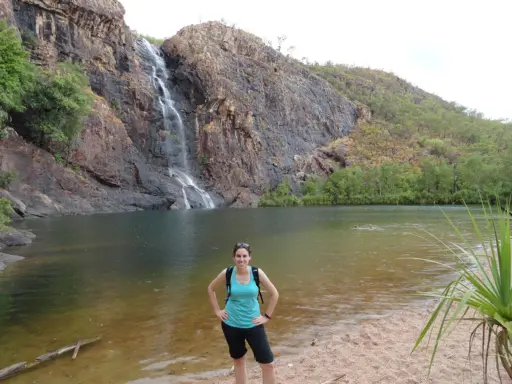Hannah Blum was attending a recent event on the University of Wisconsin-Madison campus when a worker stopped by to pick up her plate. “Thanks, mate,” said the assistant professor of civil and environmental engineering.
Cue a few quizzical looks from those around her.
Blum joined the College of Engineering faculty in August 2018 after spending the previous six years in Australia, first traveling there as a visiting researcher, then earning her PhD and finally working as an associate lecturer at the University of Sydney. And she’s admittedly still readjusting to life without regular tea breaks, laughing kookaburras and Aussie slang.
“Sometimes I feel like an outsider in my own country,” she says.
Blum brings more than a unique educational background to the Department of Civil and Environmental Engineering, though. She adds expertise in steel structures, with a particular focus on cold-formed steel—steel that, as its name suggests, doesn’t require heat during the rolling or pressing process.
 Blum at Gunlom Falls in Australia’s expansive Kakadu National Park.
Blum at Gunlom Falls in Australia’s expansive Kakadu National Park.
Cold-formed steel is lightweight yet still strong, meaning less material is needed to build a structure. It’s also easier—and cheaper—to transport. “It’s very strong compared to its weight,” says Blum, the Alain H. Peyrot Fellow in Structural Engineering. “Hot-rolled steel, it’s thick and chunky. This stuff, it’s thin sheets—it’s just a couple millimeters thick.”
Builders and engineers use cold-formed steel in the main framing for low- and mid-rise structures. For her PhD work—a project with funding from the Australian Research Council, the National Science Foundation’s counterpart down under—Blum analyzed the material’s performance in longer spans as part of warehouse or shed frames.
Blum got her introduction to cold-formed steel as an undergraduate at Johns Hopkins University. While searching for research opportunities, her first option fell through and someone pointed her in the direction of Professor Ben Schafer’s Thin-walled Structures Group.
“I did summer research there and it was phenomenal,” she says. “Even though I was an undergrad, I was still given responsibility.”
When she decided to stay at Johns Hopkins for her master’s degree, Schafer encouraged her to look abroad to broaden her experience.
“So I went on an adventure,” she says.
That adventure at Sydney extend beyond the originally planned semester, because Blum wanted to finish a project looking at overall system reliability—analyzing the probability of failure of an entire system, rather than just for a single component—in roof trusses. After a final semester back at Johns Hopkins, she was ready to return to Sydney for her PhD with Professor Kim Rasmussen.
In between identifying weaknesses in portal frame structures through large-scale experimentation and using modeling to generate equations that can deliver guidance that’s missing from current design codes, she embraced the country’s love of travel. She visited every state and territory in the country, plus both islands of New Zealand. She saw the Great Barrier Reef and hiked in Kakadu National Park in the country’s Northern Territory.
“There are so many parts that are just absolutely beautiful,” says Blum, who stopped in Fiji and got her scuba diving license on her way back to the United States. “In Sydney, you’re on the waterfront, and I love the Outback. In the Red Centre, the soil is kind of a copper color, and the way the light hits it at sunrise or sunset, it glows.”
At UW-Madison, Blum will turn her attention to the high-strength variations of both cold-formed and hot-rolled steel. She plans to test the strength against current design codes, which preliminary research has shown to be inaccurate. One challenge has already emerged: securing samples amid current global trade dynamics in the steel industry.
Blum, who’s looking forward to working in the renovated and expanded Jun and Sandra Lee Wisconsin Structures and Materials Testing Laboratory once it’s completed, says the CEE department’s combination of collegiality, shared governance and the freedom to propose—and try—new ideas sealed her decision.
“It’s a big change, but I’m excited to be here and to contribute to the Wisconsin Idea,” she says. “Time for my next adventure.”